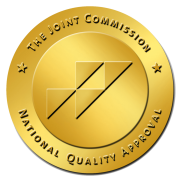The polarization of the treatment field between medication-assisted treatment (MAT) and 12-step drugfree treatment is gradually dissolving, according to experts interviewed by ADAW last week. “The problem is that some people view it as either/or,” said Philip L. Herschman, Ph.D., chief clinical officer of CRC Health Group. “Either it’s MAT and nothing else, or it’s 12-step and nothing else.”
At many treatment programs, including CRC and the Hazelden Betty Ford Foundation (the nation’s largest for-profit and not-for-profit treatment chains), it’s not either/or — it’s both. And the National Institute on Alcohol Abuse and Alcoholism (NIAAA) supports both as well.
Buprenorphine, methadone and Vivitrol are all proven medications that work, but not necessarily with the same patient, said Herschman. But other psychosocial treatments are necessary as well, including cognitive behavioral therapy (CBT).
“There are multiple evidencebased treatments, MAT being justone of them,” said Marvin Seppala, M.D., chief medical officer of the Hazelden Betty Ford Foundation. But MAT is an important one, especially because of the high overdose rate for opioid addiction. “If you neglect the literature and the science of addiction, you still have to look at the death rate,” he said. Hazelden added buprenorphine because so many patients overdosed after being discharged from treatment there (see ADAW, November 12, 2012).
“We try to differentiate between three different groups” for patients with opioid addiction, said Seppala — one treated with naltrexone (Vivitrol), one with buprenorphine and one drug-free.
The medications for alcoholism aren’t as good, and there are no medications for other drugs of abuse, noted Seppala.
Role of AA
“Hazelden is founded on the use of the 12 steps; it is one of the absolute tenets of treatment here,” said Seppala. “We are going to continue to emphasize the use of AA, CA and NA.”
Interestingly, Hazelden is “having really good outcomes on the people who refused medications but who stick around in our psychosocial therapy,” said Seppala. “the people on the medications are doing well.”
Physicians can’t predict who should be on medication and who shouldn’t, or who should be on what medication, said Seppala. “We’re trying to walk down the middle. What do you do with a 19-yearold who just started on oxycodone six months ago?” he asked.
But regardless of age, every patient who comes into a program should be informed that medications exist and may help, said Seppala. “I’m a psychiatrist and I was trained to give information — on what might work and on the risks,” he said.
There is adequate evidence to support the use of 12-step programs for people with addiction, said Seppala. Some critics claim that 12-step does not include a “manual” that has been proven by clinical trials (with the impossible placebo group) to work.
But even with CBT, the best therapists do not stick to a “manual,” said Seppala. “An experienced psychotherapist may have been trained according to a distinct model, but over time they realize it doesn’t work for everyone, and they alter their practice for different patients,” he said.
A good addiction treatment program should have a training system that helps their clinicians have a foundation in evidence-based practice, said Seppala. “But to say ‘We’re going to use CBT and you have to do it with a manual’ — that’s nonsensical,” he said.
CBT alone isn’t adequate, and 12-step alone isn’t adequate, said Seppala. “It’s true that I can suggest that people go to 90 meetings in 90 days, and some of them will stay sober,” he said. “But we need to individualize treatment.”
Hazelden has a “stigma management” program to help patients who are on buprenorphine, because there is such a lack of understanding of MAT.
Alcoholics Anonymous and similar 12-step groups are “supports as part of a complete treatment plan for recovery,” said CRC’s Herschman. As a support system, AA is part of the treatment “that happens after an acute episode of treatment,” he said. “But in and of itself, AA is not treatment.”
‘Sobriety’ first
But David Lisonbee, president and CEO of Twin Town Treatment Centers in Los Alamitos, California, thinks that some programs are too reliant on pharmaceuticals. “We as treatment providers have allied with our clients and the interests of our clients, and our preferences and our goals have to do with long-term recovery and sobriety, which in heclassic terms means you’re coping with a minimum of assistance,” he said. Some people, he said, feel that the profit motive is behind the designation of buprenorphine as a maintenance medication instead of a detoxification agent (it can be used as either).
Many providers now accept that for some patients — the long-term heroin addict, for example — maintenance medication is appropriate, said Lisonbee. “Where we balk at maintenance is if it’s an occasional user or a young adult who has dipped into his parent’s medicine cabinet,” he said. “That person is suited to long-term sobriety.”
But, he acknowledged, the field is changing. “The field used to balk at antidepressants, but over the past 10 to 15 years antidepressants have been a treatment of choice when there’s a coexisting affective disorder,” said Lisonbee.
Evidence base for AA
There is evidence for the effectiveness of 12-step facilitation (AA) in Project MATCH, the NIAAA-funded comparison of CBT, motivational enhancement therapy and AA. That study concluded in 2001 but has been used for other studies showing the evidence of the effectiveness of AA (see ADAW, June 17, 2014).
“Excessive drinking is a heterogeneous disorder,” said Raye Z. Litten, Ph.D., associate director of the NIAAA Division of Treatment and Recovery Research. “That’s why one philosophy doesn’t work for everyone — but we think AA can work for some people.”
More studies have been done recently on AA, said Litten. “People do attend [AA], they stick with it, and they have improvements in drinking outcomes.”
“I’m happy to hear that they’re putting more of a menu of reatments” in addiction treatment centers, said Litten, referring to MAT. “If one medication doesn’t work, another one might.”
Litten recalled that last year at the ASAM annual meeting there was a special symposium on integrating AA and 12-step recovery into treatment.“There’s more going on here than meets the eye,” he told ADAW. “Some people have worked hard and found medication works in some people, and they are frustrated that more people aren’t using it,” said Litten. “But that doesn’t mean you should bash AA.” There are more than 50,000 AA groups in the United States, noted Litten. “Where else can you go for help that’s free and confidential?” Litten said.
Litten noted there is a stark difference between methadone and buprenorphine, the agonists used to treat opioid addiction, and acamprosate and naltrexone, which are medications approved to treat alcoholism. “Everyone who gets methadone or buprenorphine will have an effect from those medications,” said Litten. “But the alcohol medications don’t work for everyone.”
Still, it’s important to have the full toolbox to offer to patients. And Lisonbee agreed. “We are getting there,” said Lisonbee. “But we don’t want our treatment providers to be in it for the profit. We don’t want people to submit to a treatment industry that makes more dollars. We want to be client advocates.”
Alcoholism Drug Abuse Weekly, Vol. 26 Number 8, Feb 24, 2014, Allison Insinger
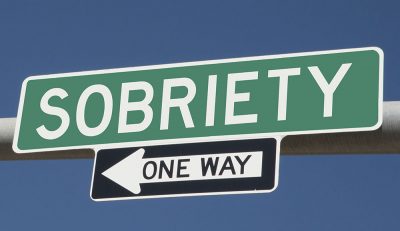 Ideas and words like “recovery”, “sobriety” and “clean and sober” make sense to people who have crossed the bridge from addiction to recovery, but people still suffering from the effects of the disease may not share that understanding. When a person trapped by their own need to drink or use chemicals arrives at the greater need to stop, they may be ready for recovery. Recovery starts with the realization that continuing to drink or use worsens existing problems and is a problem itself. At this point, the drink or drug creates negative consequences and a greater need to drink or use drugs next time.
Ideas and words like “recovery”, “sobriety” and “clean and sober” make sense to people who have crossed the bridge from addiction to recovery, but people still suffering from the effects of the disease may not share that understanding. When a person trapped by their own need to drink or use chemicals arrives at the greater need to stop, they may be ready for recovery. Recovery starts with the realization that continuing to drink or use worsens existing problems and is a problem itself. At this point, the drink or drug creates negative consequences and a greater need to drink or use drugs next time.
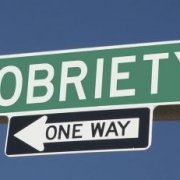
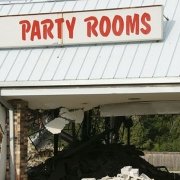



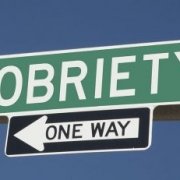
 Twin Town Treatment Centers is a preferred and contracted, in-network addiction treatment program working with the members of over fifty HMO, EPO, PPO, EAP and managed care plans.
Twin Town Treatment Centers is a preferred and contracted, in-network addiction treatment program working with the members of over fifty HMO, EPO, PPO, EAP and managed care plans.